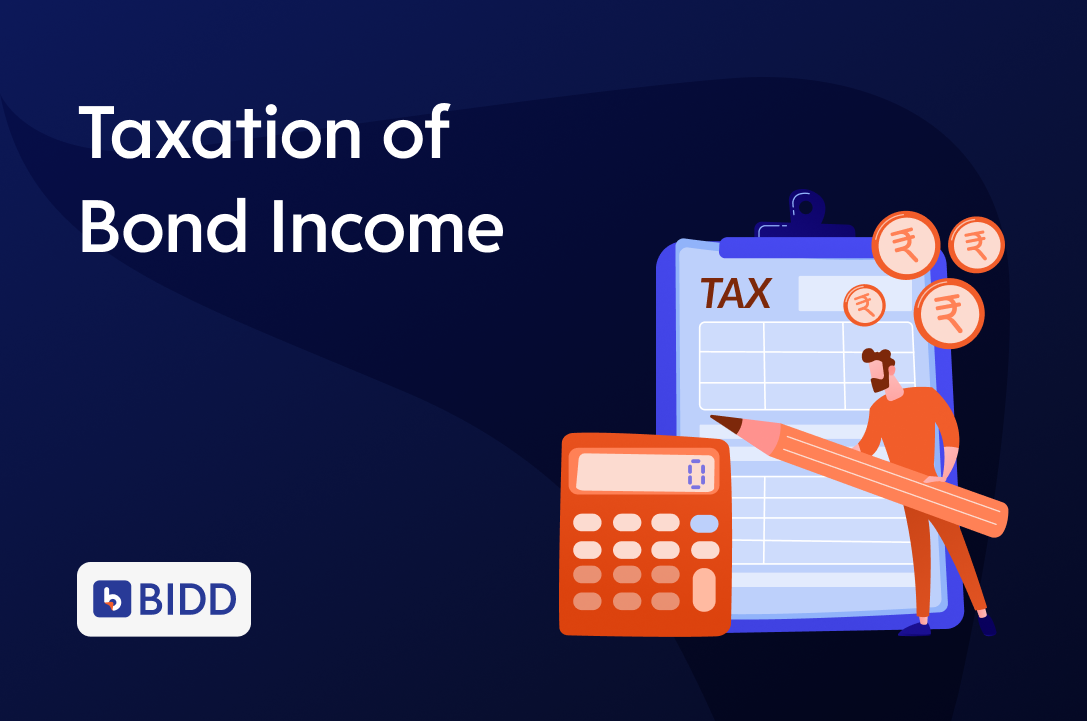Taxation of Bond Income in India (FY25 Edition)
Let’s Start with a Simple Question:
You’ve invested in a bond.
It pays regular interest, or maybe you sell it before maturity for a profit.
You’ve made money.
But how much of that money do you really keep?
Let’s break down how different types of bond income are taxed in India as per FY25 rules.
Two Ways You Earn from Bonds
- Interest Income (Coupon)
You receive periodic interest — for example, 8% per annum. - Capital Gains
You buy a bond at ₹950 and later sell it for ₹1,000.
The ₹50 profit is capital gain.
Both are taxable, but the rules differ.
1. Tax on Interest Income
- Taxed as per your applicable income tax slab
- If you’re in the 5% slab → you pay 5%
- If you’re in the 30% slab → you pay 30%
This applies to most bonds: government, PSU, and corporate bonds.
There is no preferential tax treatment even if the bond is listed.
TDS Note:
- TDS is deducted if annual interest exceeds ₹5,000
- Generally deducted at 10% if your PAN is linked
- You can view this in Form 26AS and claim it in your ITR
2. Tax on Capital Gains
This depends on how long you held the bond and whether it’s listed or not.
Listed Bonds
- Held for less than 12 months
→ Taxed as Short-Term Capital Gains (STCG) at your slab rate - Held for 12 months or more
→ Taxed as Long-Term Capital Gains (LTCG) at 12.5% without indexation
Unlisted Bonds
- Held for less than 36 months
→ STCG at slab rate - Held for 36 months or more
→ LTCG at 20% with indexation
Indexation allows you to adjust your purchase price for inflation, reducing your taxable gains.
Capital Gains Tax on Bonds at a Glance (FY25)
| Bond Type | Holding Period | Tax Rate |
| Listed | < 12 months (STCG) | As per income tax slab |
| Listed | ≥ 12 months (LTCG) | 12.5% without indexation |
| Unlisted | < 36 months (STCG) | As per income tax slab |
| Unlisted | ≥ 36 months (LTCG) | 20% with indexation |
What About Tax-Free Bonds?
Certain government-backed entities like NHAI, PFC, or REC issue tax-free bonds. Here’s what to know:
- Interest is completely exempt from tax under Section 10(15)(iv)(h)
- But if you sell the bond, any capital gains are still taxable
Not all bonds are tax-free — always verify the terms in the offer document or consult your advisor.
Additional Points to Remember
TDS Applicability
- Deducted if interest exceeds ₹5,000 annually
- 10% if PAN is furnished
- Can be adjusted when filing returns
Where to Report in Your ITR
- Interest income → “Income from Other Sources”
- Capital gains → “Capital Gains” section
- Always reconcile with Form 26AS and AIS
Using Platforms
Platforms like Bidd, NSE goBID, and others provide annual tax reports.
These can make your filing process easier.
Final Thoughts: Plan for Post-Tax Returns
Bond investing offers predictable income — but taxes can take a bite if you’re not paying attention.
Before you invest, always consider:
- Will the interest push me into a higher tax slab?
- Should I hold longer to benefit from LTCG treatment?
- Is the bond listed or unlisted — and how does that affect tax?
The smartest investors don’t just look at what they earn.
They focus on what they keep.
So the next time someone tells you, “This bond pays 10%,”
Ask yourself:
What’s my actual return after tax?
What’s my holding period strategy?
Because in bond investing —
Net return matters more than headline yield.
Be that investor.




